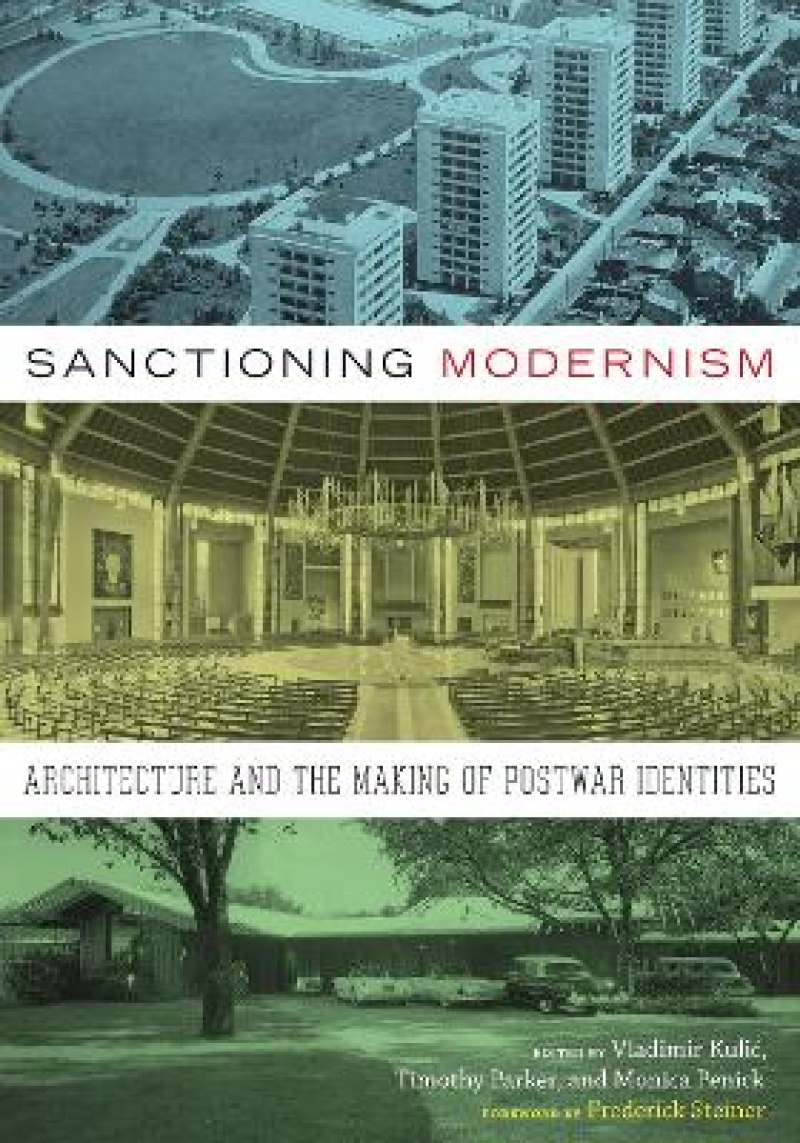With new research on building programs in political, religious, and domestic settings in the United States and Europe, this collection of essays offers a fresh look at postwar modernism and the role that architecture played in constructing modern identities.In the decades following World War II, modern architecture spread around the globe alongside increased modernization, urbanization, and postwar reconstruction—and it eventually won widespread acceptance. But as the limitations of conventional conceptions of modernism became apparent, modern architecture has come under increasing criticism. In this collection of essays, experienced and emerging scholars take a fresh look at postwar modern architecture by asking what it meant to be “modern,” what role modern architecture played in constructing modern identities, and who sanctioned (or was sanctioned by) modernism in architecture.This volume presents focused case studies of modern architecture in three realms—political, religious, and domestic—that address our very essence as human beings. Several essays explore developments in Czechoslovakia, Romania, and Yugoslavia and document a modernist design culture that crossed political barriers, such as the Iron Curtain, more readily than previously imagined. Other essays investigate various efforts to reconcile the concerns of modernist architects with the traditions of the Roman Catholic Church and other Christian institutions. And a final group of essays looks at postwar homebuilding in the United States and demonstrates how malleable and contested the image of the American home was in the mid-twentieth century. These inquiries show the limits of canonical views of modern architecture and reveal instead how civic institutions, ecclesiastical traditions, individual consumers, and others sought to sanction the forms and ideas of modern architecture in the service of their respective claims or desires to be modern.
Les mer
With new research on building programs in political, religious, and domestic settings in the United States and Europe, this collection of essays offers a fresh look at postwar modernism and the role that architecture played in constructing modern identiti
Les mer
ForewordFrederick SteinerPrefaceVladimir Kulić, Timothy Parker, and Monica PenickAcknowledgmentsIntroduction. Writing History: Reflections on the Story of Midcentury Modern ArchitectureDennis P. DoordanPart I. Modernism and the StateIntroductionVladimir Kulić1. Bucharest: The City TransfiguredJuliana Maxim2. The Scope of Socialist Modernism: Architecture and State Representation in Postwar YugoslaviaVladimir Kulić3. Czechoslovakia's Model Housing Developments: Modern Architecture for the Socialist FutureKimberly Elman Zarecor4. Sanctioning Modernism and Tradition: Italian Architecture, the Vernacular, and the StateMichelangelo SabatinoPart II. Making Religion ModernIntroductionTimothy Parker5. Uncertainty and the Modern Church: Two Roman Catholic Cathedrals in BritainRobert Proctor6. "Humanly sublime tensions": Luigi Moretti's Chiesa del Concilio (1965–1970)Timothy Parker7. Modernism and the Concept of Reform: Liturgy and Liturgical ArchitectureRichard KieckheferPart III: Modernism and DomesticityIntroductionMonica Penick8. "Technologically" Modern: The Prefabricated House and the Wartime Experience of Skidmore, Owings and MerrillHyun-Tae Jung9. "Modern but not too modern": House Beautiful and the American StyleMonica Penick10. House and Haunted GardenSandy IsenstadtFurther Reading
Les mer
"An original and significant contribution to the field of architectural/design history. . . . This volume [presents] material that is new to art historical investigation: in particular, studies of eastern European traditions in relation to modernism and to architecture under communism with the Cold War as an important backdrop and context. . . . . The volume questions as well as explores and expands [the more familiar canon of postwar architecture], helps the reader by alluding or directly referencing postmodernism, and allows for an overall reconsideration of assumptions that lead to a fuller and more pluralistic understanding of modern architectural and design history."
Les mer
"An original and significant contribution to the field of architectural/design history... This volume [presents] material that is new to art historical investigation: in particular, studies of eastern European traditions in relation to modernism and to architecture under communism with the Cold War as an important backdrop and context... The volume questions as well as explores and expands [the more familiar canon of postwar architecture], helps the reader by alluding or directly referencing postmodernism, and allows for an overall reconsideration of assumptions that lead to a fuller and more pluralistic understanding of modern architectural and design history." -- David Raizman, Distinguished University Professor, Westphal College of of Media Arts and Design, Drexel University, and author of History of Modern Design and coeditor of Objects, Audiences, and Literature: Alternative Narratives in the History of Design
Les mer
Produktdetaljer
ISBN
9781477307595
Publisert
2014-06-01
Utgiver
Vendor
University of Texas Press
Vekt
513 gr
Høyde
254 mm
Bredde
178 mm
Dybde
23 mm
Aldersnivå
G, 01
Språk
Product language
Engelsk
Format
Product format
Heftet
Antall sider
304
Introduction by
Biographical note
Vladimir Kulic is Assistant Professor in the School of Architecture at Florida Atlantic University in Fort Lauderdale. He is the coauthor of Modernism In-Between: The Mediatory Architectures of Socialist Yugoslavia and the coeditor of Unfinished Modernizations—Between Utopia and Pragmatism: Architecture and Urban Planning in the Former Yugoslavia and the Successor States.Timothy Parker is Assistant Professor in the School of Architecture and Art at Norwich University in Northfield, Vermont.
Monica Penick is Assistant Professor in Design Studies at the University of Wisconsin–Madison.
